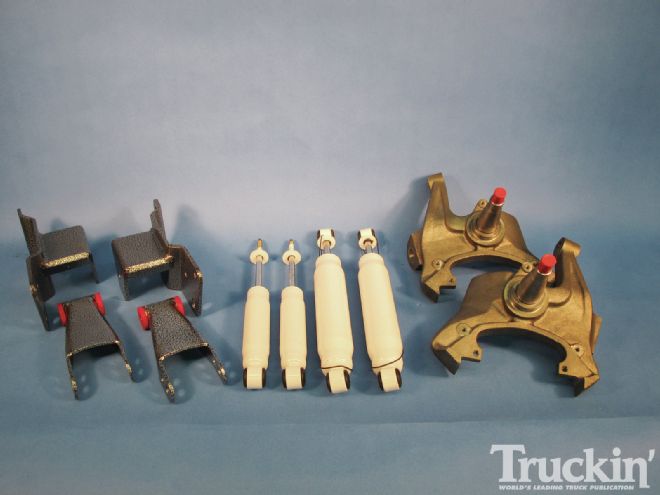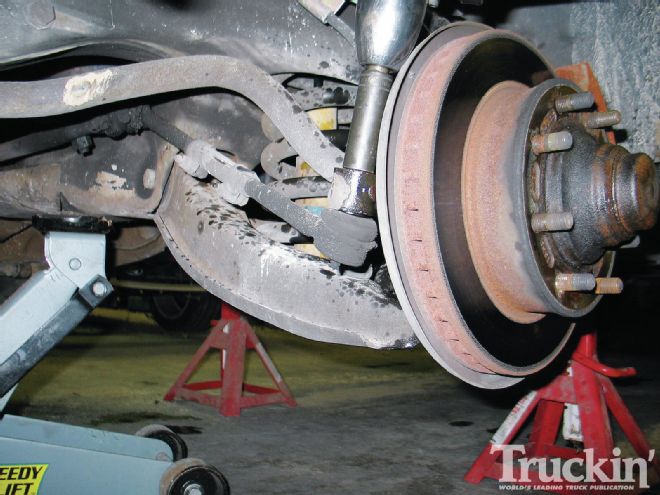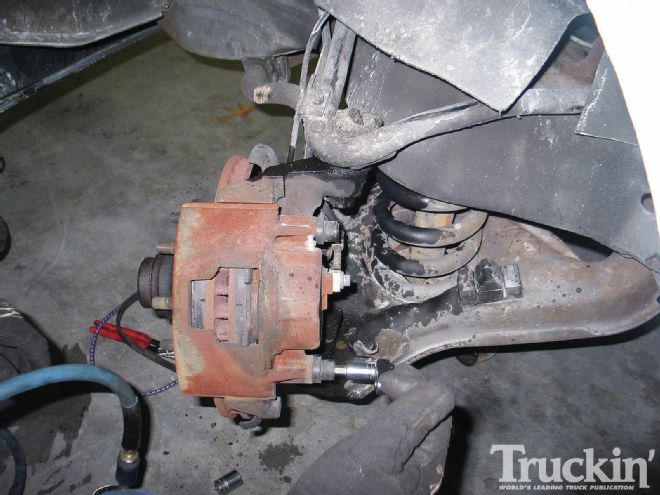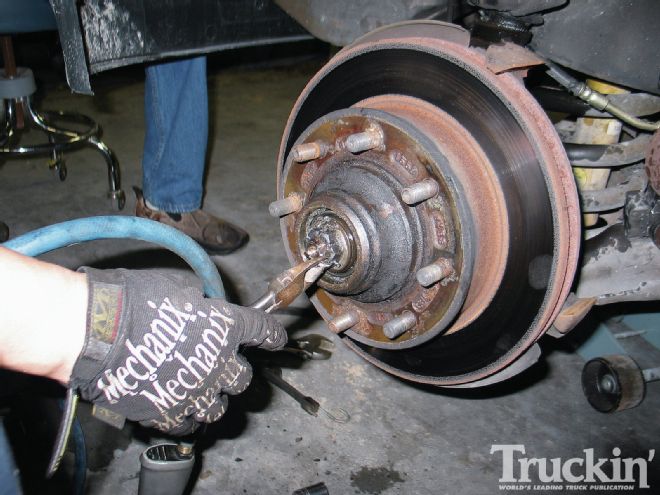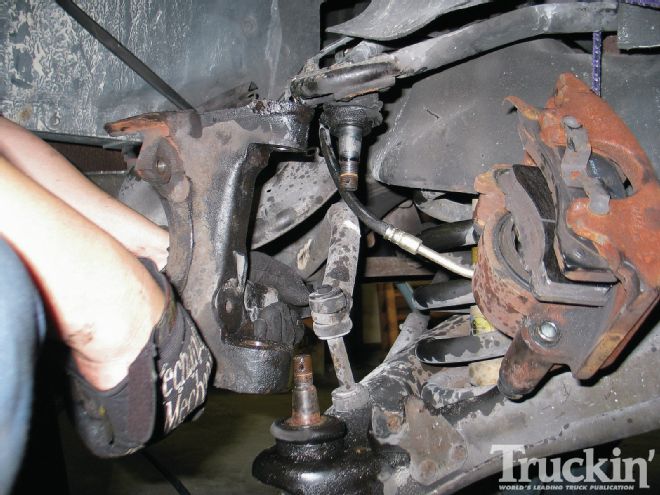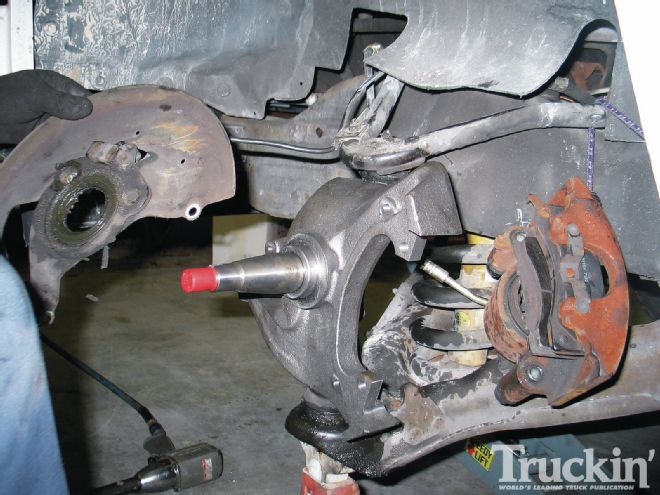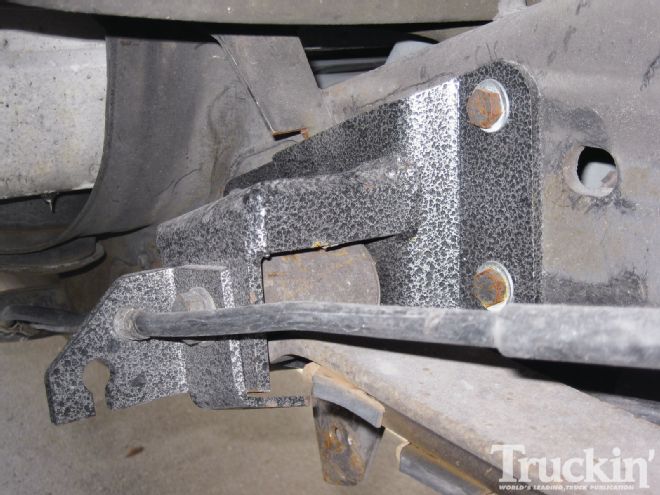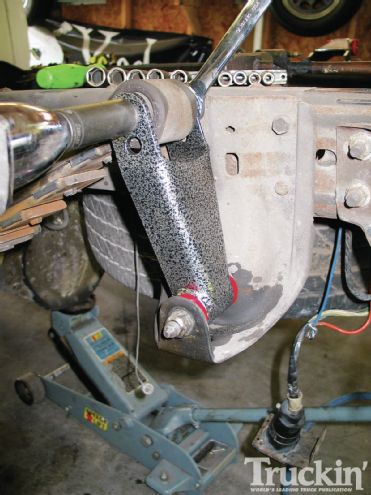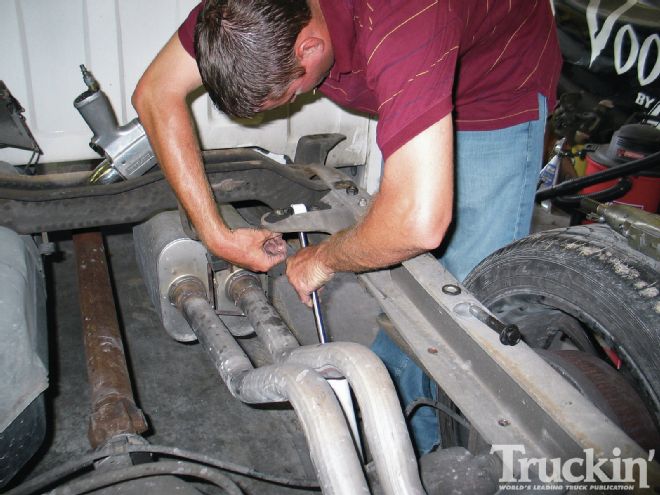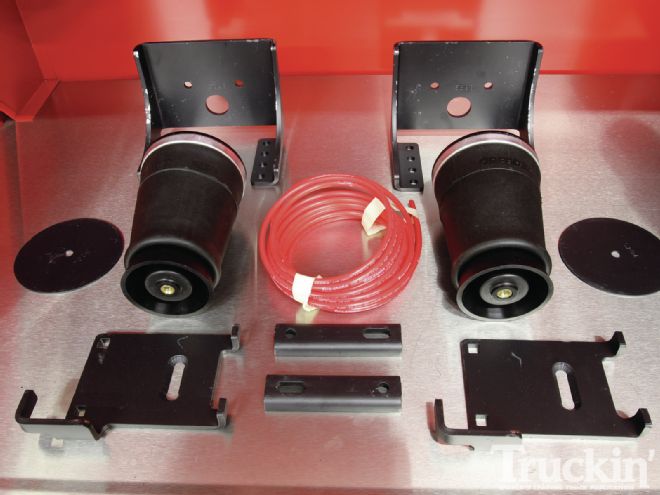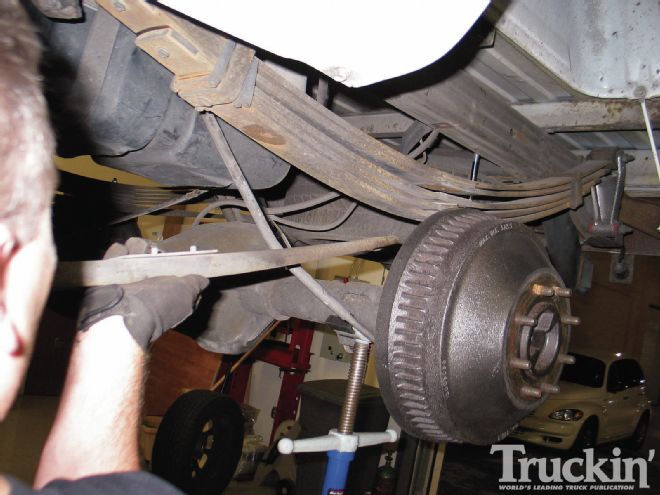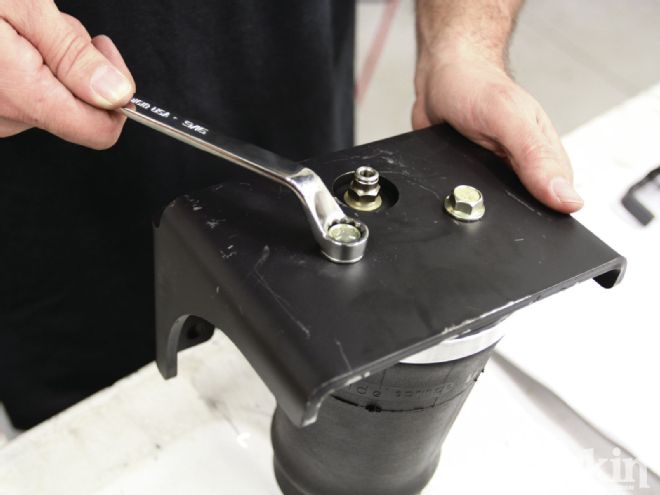If you’re reading any sort of performance magazine, like Truckin’, then there’s a good chance that you have a hard time leaving anything stock, or as-delivered from the factory. You like to personalize and customize your rides and we’re no different. Just because you bought a truck to tow things and haul cargo doesn’t mean that you can’t have it look the way you want.

| 2000 Gmc Sierra Low Tow front Left Towing Motion
We recently came across a tow rig that was begging to be dropped. It was already wearing a set of sporty Raceline 22-inch wheels with Falken low-profile rubber, but it needed the stance to match. After doing a bit of research, we found that there didn’t seem to be a whole lot of three-quarter-ton lowering kits on the market, and basically none that were specific to our 2000 GMC Sierra C2500 classic Crew Cab truck. Chances are, however, that your 2500-series pickup utilizes many of the same components as its bigger 3500 brethren. And there are plenty of kits for those.
To accomplish our lowered stance, we went to DJM Suspension, who has been dropping trucks for a few decades. The folks there know what they are doing, and the relative ease of installation of the company’s products showed this.
DJM offers two kits for your fullsize Chevy or GMC. There’s the nice and easy 3-4 drop that utilizes drop spindles with a hanger/shackle kit in the rear. If you need to mow the pavement with your front bumper, DJM has the Slam kit, which drops your ride 5 inches in the front and 7 inches in the rear. This is accomplished by using drop spindles and 2-inch lowering springs up front, with an axle flip kit out back.
We went with the 3-4 drop given the sizeable wheel/tire package that we were already using. For the front end, the prescription was a simple set of drop spindles and accompanying shock absorbers. Pull the factory parts off, mount the new spindle, and bolt the parts back on. The reward was instant the minute the wheels hit the ground.
Out back, the installation of hangers and shackles is a bit more involved, but equally rewarding. Removing the factory rivets that hold the stock spring hangers on is challenging, but with the right tools, more easily accomplished.
After setting the ride height to where we thought it should be, we looked at giving the back half of the truck a little support in the way of an air spring setup. Firestone Industrial Products has been in the air spring game a long time, and manufactures them for everything from tractor-trailers on down to your mini-truck.
In lowering your truck, you’re removing some of the factory rake or preload in the rear suspension that prevents the truck from buckling down when the payload hits the bed. Firestone’s Sport Rite air helper springs mount between the frame and the leaf springs to support the added weight and keep the load level.

| 19
With the truck lowered, you often don’t have the room between the two to fit an air spring, and that was the situation we ran into, so we went with the 2516 kit that mounts the air springs outside of the actual frame, but on top of the leaf spring. The kit retails for $300, and you can find the nearest Firestone distributor right on the company’s website.
One other thing you’ll want to consider is the weight rating of your tires. Though the rubber band-like profile looks great, oftentimes those sorts of tires are not rated to support a lot of weight. Our Falken Azenis tires barely met our self-imposed minimum of a 5,000-pound tow capacity, and we contemplated moving to something a bit more highly rated, but given the fact that we only tow occasionally, we’ll save the tire upgrade for the next time we need to purchase rubber.
That being said, there’s no reason why you can’t lower your three-quarter or one-ton truck and still deliver the payload that your truck is capable of carrying, so check out how we made it happen for our 2000 Crew Cab.
